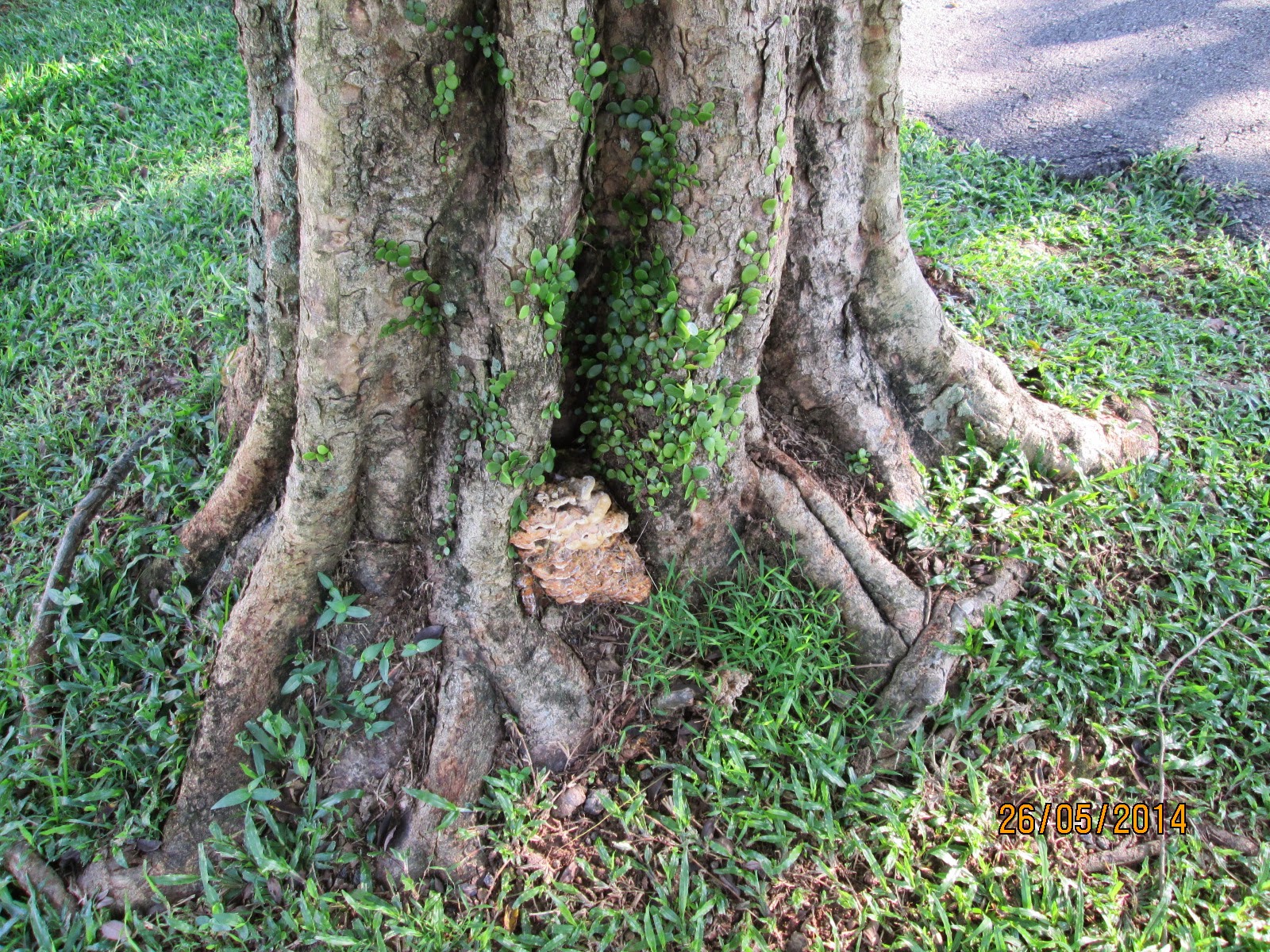Toads
Thursday, September 18, 2014
Leaning tree next to a mound, part 2
I re-visited the washing bay, and wanted to see if the water really entered the tree's root zone through the cracks. And I was also bored. So I hosed some water down, and look at the photo to see what emerged from the hole:
Monday, September 15, 2014
Leaning tree next to a mound
A tree in the operations/logistics area was noted to be leaning more by the day, and the concrete washing bay next to it was getting more heaved up.
The roots may have pulled loose due to saturation of water from the washing bay or excessive rainfall, and caused the tree to lean. As it leans, more gaps in the soil may have been created to introduce more water into the root zone. A mound was created on one side of the trunk by roots lifting soil.
The tree could be supported by guying but it was too large. And it was too late to close the gaps in the soil to stop the roots from losing grip. Hence, it was decided to remove the tree as it was next to a frequently used footpath (across the hedge).
The roots may have pulled loose due to saturation of water from the washing bay or excessive rainfall, and caused the tree to lean. As it leans, more gaps in the soil may have been created to introduce more water into the root zone. A mound was created on one side of the trunk by roots lifting soil.
The tree could be supported by guying but it was too large. And it was too late to close the gaps in the soil to stop the roots from losing grip. Hence, it was decided to remove the tree as it was next to a frequently used footpath (across the hedge).
To the left of the leaning tree is a hedge, and across the hedge is a frequently used footpath.
The heaved up washing bay with gaps in the concrete slabs that may have allowed water into the rootzone.
Overview of the tree. You can see half a buggy at the bottom left corner of the photo for size comparison. The tree might have been correcting the lean by "turning" its trunk and putting more growth in the opposite direction of the lean.
Aftermath.
Saturday, September 6, 2014
Organic matter heaped onto root collar of trees
A mass of fungus was observed to be growing at the root collar of trees, and we wondered if it was *gasp* ganoderma. Upon closer look it was not, but the guard was not let down, as it could still be a type of necrophytic fungi.
Looked like someone left food scraps at the root collar.
Prying the damn thing out.
Scraping the remainder off. Hmm looks like it was just a saprophyte fungus feeding on organic matter that was not part of the tree. The bark was still intact.
Poking around for anything soft, which could indicate left over fruiting body or decaying bark/tissues.
Cinnamon powder is known to be a natural fungicide, so I applied it on the crevices after I cleared out the organic matter and fruiting bodies. But apparently, the correct method was to mix the powder in water, let the mixture sit a while, and then spray on the target area.
Hopefully there would not be a recurrence of this fungus problem on the treated trees.
Subscribe to:
Posts (Atom)









